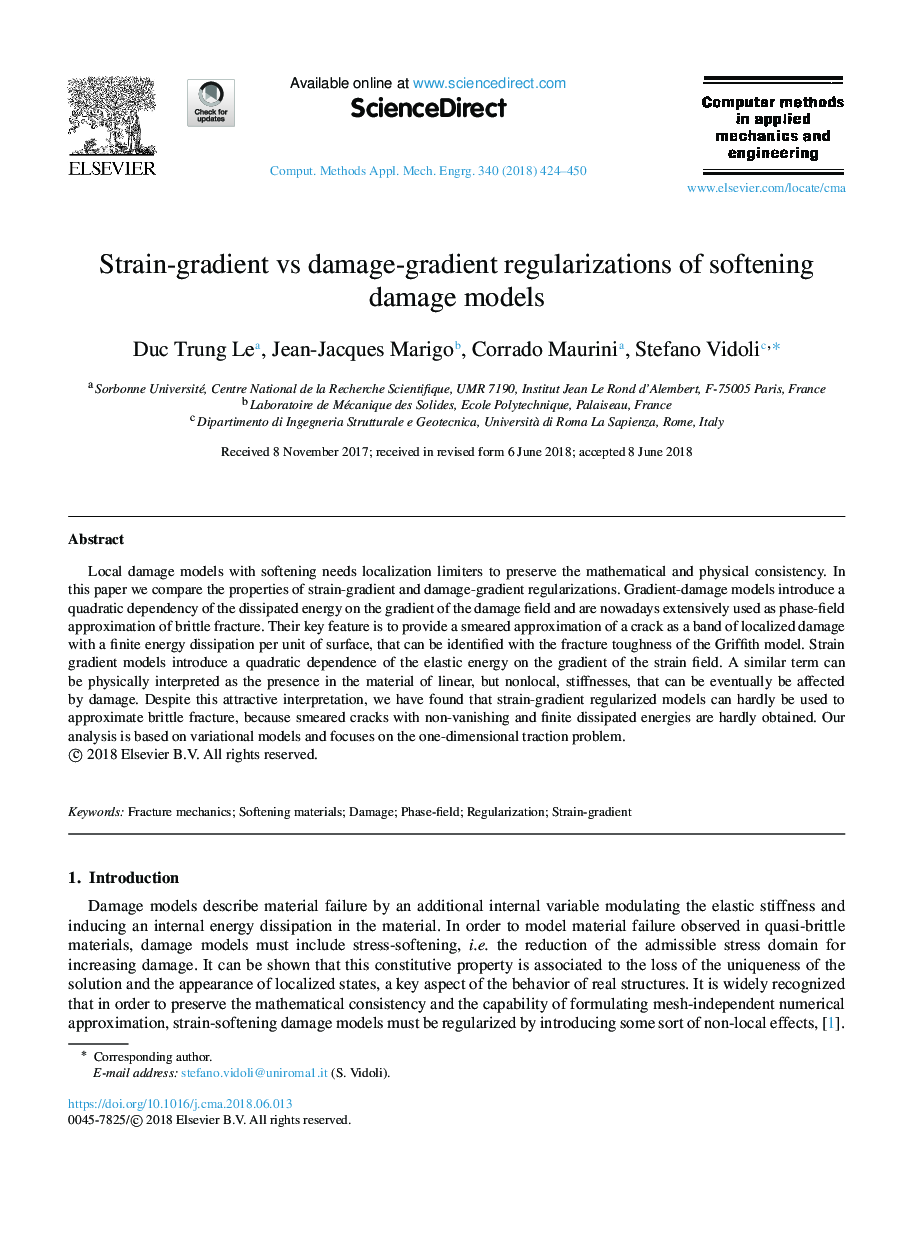| Article ID | Journal | Published Year | Pages | File Type |
|---|---|---|---|---|
| 6915316 | Computer Methods in Applied Mechanics and Engineering | 2018 | 27 Pages |
Abstract
Local damage models with softening needs localization limiters to preserve the mathematical and physical consistency. In this paper we compare the properties of strain-gradient and damage-gradient regularizations. Gradient-damage models introduce a quadratic dependency of the dissipated energy on the gradient of the damage field and are nowadays extensively used as phase-field approximation of brittle fracture. Their key feature is to provide a smeared approximation of a crack as a band of localized damage with a finite energy dissipation per unit of surface, that can be identified with the fracture toughness of the Griffith model. Strain gradient models introduce a quadratic dependence of the elastic energy on the gradient of the strain field. A similar term can be physically interpreted as the presence in the material of linear, but nonlocal, stiffnesses, that can be eventually be affected by damage. Despite this attractive interpretation, we have found that strain-gradient regularized models can hardly be used to approximate brittle fracture, because smeared cracks with non-vanishing and finite dissipated energies are hardly obtained. Our analysis is based on variational models and focuses on the one-dimensional traction problem.
Related Topics
Physical Sciences and Engineering
Computer Science
Computer Science Applications
Authors
Duc Trung Le, Jean-Jacques Marigo, Corrado Maurini, Stefano Vidoli,
